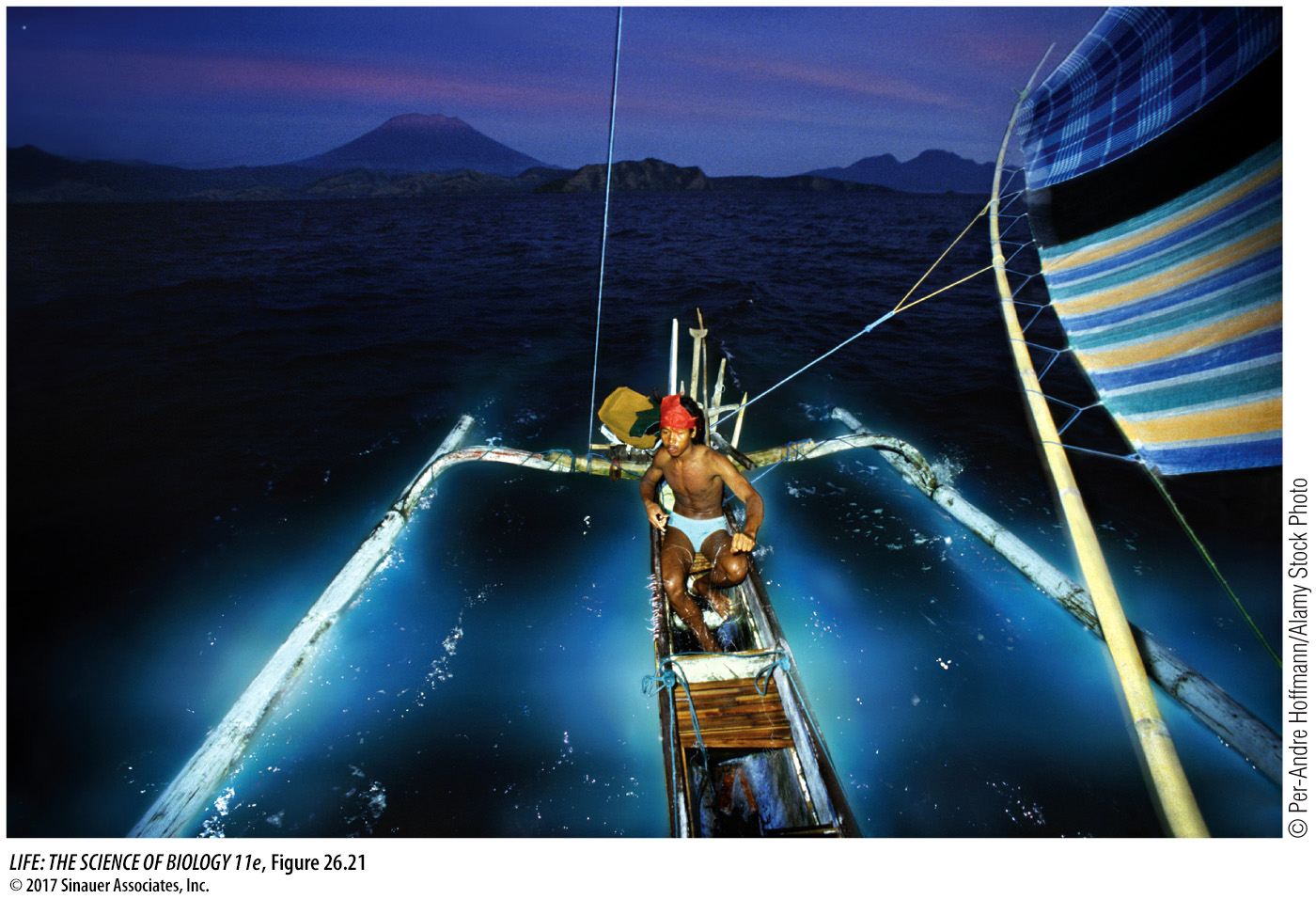Investigating Life
570
investigating life
Red tides are harmful, but how are dinoflagellates beneficial to marine ecosystems?
The opening of this chapter discussed harmful red tides, or blooms of dinoflagellates. But not all dinoflagellate blooms produce problems for other species. Dinoflagellates are important components of many ecosystems, as we have seen throughout this chapter. Photosynthetic dinoflagellates also produce much of the atmospheric oxygen that most animals need to survive.
As we saw in Investigating Life: Can Corals Reacquire Dinoflagellate Endosymbionts Lost to Bleaching?, corals and many other species depend on symbiotic dinoflagellates for food. In addition, as photosynthetic organisms, free-
Future directions
Some dinoflagellates produce a beautiful bioluminescence (Figure 26.21). Unlike the bioluminescent bacteria described at the start of Chapter 26, however, dinoflagellates cannot generate a steady bioluminescence, but produce bright flashes of light when disturbed, as people who swim in the ocean at night in certain regions often observe. What function do these flashes serve? Many light-

Media Clip 26.8 Flashing Dinoflagellates
www.life11e.com/